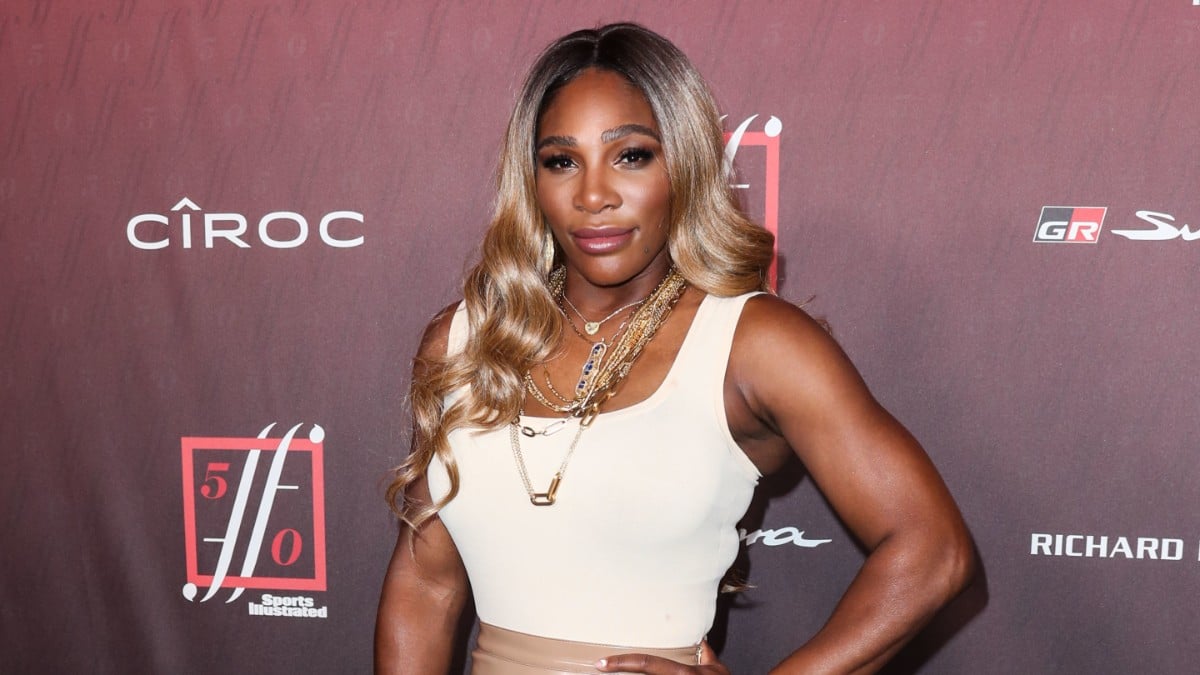
With modern medicine comes higher chances of survival rates among pregnant women. However, Serena Williams has exposed more truth to the struggle that women, especially Black women, still face in the maternity ward.
The talented tennis player, whose life with sister Venus has been brought to the big screen in the Will Smith movie King Richard, has revealed in more depth the ordeal she went through immediately following the birth of her daughter Olympia over four years ago.
In a new op-ed piece, Serena has shared her story in her own words, describing her pregnancy and birthing journey and how she ended up needing to be her own advocate to save her life.
Serena shared the horrifying details regarding how she had to advocate for her health following an emergency c-section
In the revelatory article, the tennis pro shared with Elle magazine about the saga that led up to the star needing to push the medical professionals around her to listen to her concerns and subsequently help save her life.
Serena first described her love of being pregnant, writing that she was “one of those women” who loved pregnancy, despite the headaches and weird mouth taste that came with her first trimester.
She then segued into the moments in the hospital when she was first induced and later told to get an emergency c-section after hours of labor were leading to little progression, and the baby’s heart rate was steadily dropping.
“Every time the baby’s heart rate dropped, the nurses would come in and tell me to turn onto my side,” she penned.
“The baby’s heart rate would go back up and everything seemed fine. I’d have another contraction, and baby’s heart rate would drop again, but I’d turn over and the rate would go back up, and so on and so forth.”
After a meeting between her medical team and her husband, internet entrepreneur Alexis Ohanian, Serena said she was told that she was going to need surgery to get the baby out safely and avoid the risks of further trauma or even loss of the infant.
What Serena said she couldn’t have seen coming next was her fight to save her own life when she knew something was wrong after the c-section was done.
“In 2010, I learned I had blood clots in my lung, clots that, had they not been caught in time, could have killed me,” she revealed, adding that she had “lived in fear of them returning,” and the worry crept back after the birth, leading to her asking the nurse if she should be on a heparin drip.
“I asked a nurse, ‘When do I start my heparin drip? Shouldn’t I be on that now?’ The response was, ‘Well, we don’t really know if that’s what you need to be on right now.’ No one was really listening to what I was saying,” she wrote.
Despite her struggle to get the nurses and doctors to listen, Serena persisted in pushing her team to hear her, especially after she developed a cough that ended up ripping open her stitches.
“In the other room, I spoke to the nurse. I told her, ‘I need to have a CAT scan of my lungs bilaterally, and then I need to be on my heparin drip.’ She said, ‘I think all this medicine is making you talk crazy.’ I said, ‘No, I’m telling you what I need. I need the scan immediately. And I need it to be done with dye,'” Serena said.
Her instincts turned out to be spot on, with doctors finally hearing her out and running the scan only to discover the athlete indeed had developed another blood clot in her lungs that needed to be broken up before it reached her heart.
“I wasn’t coughing for nothing; I was coughing because I had an embolism, a clot in one of my arteries. The doctors would also discover a hematoma, a collection of blood outside the blood vessels, in my abdomen, then even more clots that had to be kept from traveling to my lungs,” she later revealed.
Black women are three times more likely to die during or following childbirth than white women
Serena concluded her op-ed, pointing out the differences in the kind of medical care that Black women get versus white women.
She pointed out that even as a high-paid, famous athlete, she would possibly be dead if she had not been her own advocate and listened to her body and intuition.
In an article published by PRB, Black women were five times more likely to die from pregnancy-related cardiomyopathy and blood pressure disorders than white women.
After examining death certificates between 2016-2017, Marian MacDorman of the Maryland Population Research Center (MPRC) at the University of Maryland, the leader of the study, found evidence that non-Hispanic Black women were 3.5 times more likely to suffer birth and post-birth mortality than white women.
The research also found that postpartum cardiomyopathy, a type of heart failure following birth, and preeclampsia and eclampsia, blood pressure disorders were all leading causes of death among pregnant Black women.
The study added that the death rate among Black women who had those conditions during pregnancy was five times more likely to die than white women.
That is one ugly woman. Plus she is huge. She has arms like a man and her azz is huge and so are her thighs. She should compete against women who are more her size. She has an unfair advantage in her size. I cannot get over her looking like a man in drag when she tries to dress herself up.